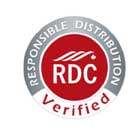Industry Information, Shipping to Canada
How Off-Shoring Effects North American Transportation Patterns
This is part 9 in our 10 part series on North American transportation.
The Change in Transportation Patterns
Over the last decade transportation patterns changed from primarily North/South to East/West. The state of transportation a decade ago was a flow of raw materials from Canada to Manufacturing in the US and a flow of manufactured goods back to Canada. This pattern was typical in the US as well with trade between the Northern US states and the Southern US states being similar. With many finished goods being sourced from Asia over the last decade, North American manufacturing has largely disappeared in comparison to what it used to be. Manufactured goods now flow inbound from Asia on the East and West Coast of Canada and the United States with raw materials being exported back to China. As you can guess, this has dramatically changed transportation patterns.
The Major Changes
Net flow of goods from West to East
Most goods from Asia arrive on the West Coast and are destined for markets in the Eastern States and/or Provinces of Canada.
Reduced North/South flow of traffic
Less manufactured goods/raw materials traded between Canada and the US.
Reduced Pricing/Demand on Southbound Shipments
With less demand for raw materials and finished goods from Canada destined for the US, but an increased demand for US freight (either from the US or from overseas) the balance of freight has changed making outbound Canadian Freight less expensive.
Increased Pricing/Demand for Northbound Shipments
Because there are less trucks going south, there is less availability for trucks coming back to Canada. Thus, a greater demand and higher pricing
Outlook for the Future
The outlook for the future is still being decided. With a lower US dollar, a high unemployment rate, and cheaper energy costs largely due to fracking operations in the US, it is becoming “cheaper” to manufacture in North America again. Many companies are taking a renewed look at manufacturing in North America once again. It results in a shorter supply chain and reduced costs for inventory and transportation, which are significant. Companies will make a choice that improves their bottom line the most. Should a manufacturing renaissance take place in North America, I think we will see a return to more traditional traffic patterns for freight in North America.
Here at DSN we’ve been moving freight in North America for over 25 years through many ups and downs and changes in the marketplace. If you need help getting your freight moving on time, or on budget, please contact us. We’re here to help.
About Author
Comments are closed











